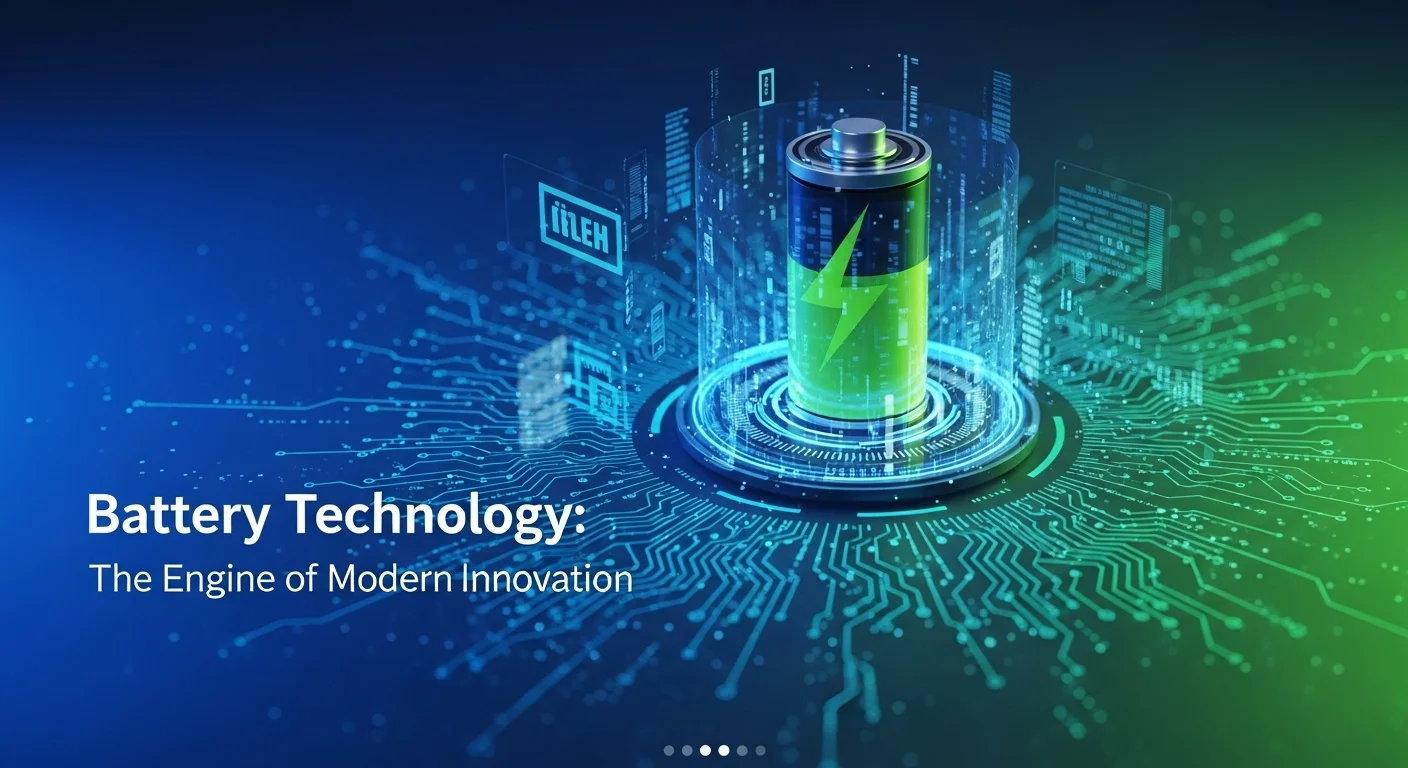The Future of Power: Your Guide to the Next-Gen Batteries Changing Our World

Executive Summary
Let's be honest, we usually only think about batteries when they die on us. But these little power packs are the unsung heroes of our modern world, fueling everything from our smartphones to the global shift towards green energy. For years, I've watched the industry push the limits of traditional lithium-ion batteries, and now, we're on the brink of a massive breakthrough. This article is your personal guide to the next generation of battery technology. We'll explore the game-changing potential of solid-state batteries, which promise to make our devices safer and longer-lasting. We'll also look at graphene batteries that could charge in minutes, and affordable sodium batteries that could power our homes. I'll even touch on what major players like Toyota are doing with their ambitious solid-state battery programs. Understanding these innovations isn't just for tech nerds; it's key to seeing where business, technology, and our daily lives are headed.
Table of Contents
What Are Batteries and Why Do They Matter So Much?
In the grand theater of modern tech, the humble battery is the stagehand working tirelessly behind the scenes. It's the silent force that brings our world to life, from the phone in your hand to the electric cars on our roads and the massive data centers that hold the internet. I've been in this industry long enough to see that without a way to store and carry power, the digital age simply wouldn't exist. Think of a battery as a tiny, self-contained power plant. It holds chemical energy and, when you need it, converts it into electricity. The basic setup is simple: two ends (a cathode and an anode), a substance in the middle (the electrolyte) that lets tiny charged particles move between them, and a separator to keep things from getting messy. When you turn on your device, a chemical reaction starts, pushing power out. In rechargeable batteries, we just reverse that process to fill it back up. It’s been a long journey. The first batteries were clunky lead-acid things, great for starting a car but useless for a pocket device. We then moved to nickel-cadmium (NiCd) and nickel-metal hydride (NiMH), which powered the first wave of Walkmans and chunky mobile phones. But the real revolution came in the 90s with the lithium-ion battery. It was lighter, held more power, and lasted longer. This single invention unleashed the mobile world we know today. But even lithium-ion has its limits. We're asking more of it than ever before, and its reliance on materials like cobalt creates environmental and ethical headaches. This is why the race is on to find what's next.
The Next Wave of Battery Innovation
The quest for a better battery has kicked off a global wave of innovation. Scientists and engineers are exploring new chemistries that promise to be safer, hold more power, and be kinder to our planet. These aren't just small tweaks; they're complete reimaginations of how we store energy, and they have the power to create entirely new industries. I've seen firsthand how closely businesses, from startups to giants like Toyota, are watching this space. The first to crack the code will have a massive advantage. The main contenders in this race are solid-state batteries, graphene batteries, sodium batteries, and lithium-sulfur batteries. Each one tackles a different weakness of today's technology. For instance, the solid-state battery gets rid of the flammable liquid inside current batteries, making them incredibly safe and able to store much more energy. This is why many call it the 'holy grail' for electric cars, promising vehicles that can drive further and charge faster. Toyota has gone all-in on this, and their solid-state battery program is one of the most advanced in the world. They've filed over a thousand patents and aim to sell EVs with this technology within the next few years, a move that could completely reshape the car market by finally killing 'range anxiety.' Then there's the graphene battery. Graphene is a wonder material—a single layer of carbon atoms that is incredibly strong and conductive. When used in batteries, it could allow for mind-bogglingly fast charging, potentially juicing up your devices in minutes, not hours. They could also last longer and hold more power. The biggest hurdle right now is cost; making high-quality graphene is still very expensive. The sodium battery is the practical, sustainable choice. Sodium is everywhere—it's one of the most common elements on Earth. This makes sodium-ion batteries a potentially cheaper and more eco-friendly alternative to lithium-ion. While they don't hold quite as much energy yet, they work great in extreme temperatures and are very safe, making them perfect for storing energy for power grids or homes. Finally, the lithium-sulfur battery (Li-S) is the high-energy champion, promising to store up to five times more energy than its lithium-ion cousins. This makes it a dream for industries where weight is everything, like aerospace. Imagine electric airplanes and delivery drones that can fly for hours. Li-S batteries have had issues with durability, but recent breakthroughs are bringing them closer to reality. For any business today, understanding these shifts—from the revolutionary power of a solid-state cell to the sustainable appeal of a sodium one—is no longer optional. It's a strategic necessity.

Your Complete Guide to Batteries in Business and Technology
For any business trying to stay ahead, navigating the world of battery tech is crucial. Knowing the differences between battery types and what they're good for can give you a real edge. This guide will take you on a deeper dive, breaking down how these batteries work and how they can power your business solutions. The market today is built on the lithium-ion battery. It works by moving lithium ions between a graphite anode and a metal oxide cathode. The specific materials used in that cathode—like NMC (Nickel Manganese Cobalt) or LFP (Lithium Iron Phosphate)—determine the battery's personality. From my experience, it's always a trade-off. An electric car company might choose an energy-dense NMC battery to give their cars the longest possible range. On the other hand, a company building a large energy storage system for the power grid would probably prefer the safety, long life, and lower cost of an LFP battery. But the real excitement is in what comes next, with new technologies that are poised to leave these limitations behind.
A Deep Dive into Next-Gen Battery Technologies
The technology that has everyone talking is the solid-state battery. The big idea here is to replace the liquid electrolyte with a solid material, like a thin piece of ceramic or glass. This simple change has huge consequences. First, it makes the battery far safer by removing the flammable liquid that can cause fires. Second, this solid structure stops the growth of tiny, needle-like fibers called dendrites that can cause short circuits. This allows for the use of a pure lithium metal anode, which is the key to unlocking massive energy gains. A solid-state battery could potentially double the energy density of what we have now. That means an electric car could go twice as far, or have a battery that's much smaller, lighter, and cheaper. I've been following Toyota's solid-state battery work for years, and it's a perfect example of this potential. They are pushing hard to start mass production, aiming to launch EVs with these next-gen cells between 2027 and 2028. They're promising a range of over 1,000 km (about 600 miles) and a charging time of just 10 minutes. While scaling up manufacturing is still a challenge, the progress from Toyota and others shows this technology is nearly here. Another game-changer is the graphene battery. To be clear, this usually means a hybrid battery that uses graphene to boost its performance. Graphene's unique structure offers a massive surface area and incredible conductivity. When I see it added to a battery's electrode, I know it means one thing: speed. It creates a superhighway for electricity, enabling ultra-fast charging. Some studies suggest a five-fold increase in charging speed. Graphene also adds strength, making the battery more durable and extending its lifespan. The main holdup, as I mentioned, is cost. But as manufacturing gets better and cheaper, I expect to see it in high-end electronics and performance vehicles. For businesses focused on sustainability, the sodium battery is an incredibly exciting prospect. It works just like a lithium-ion battery but uses cheap, abundant sodium instead. We can literally get it from seawater. This completely sidesteps the environmental and political issues tied to lithium mining. The main drawback for now is lower energy density, so they're not ideal for smartphones or long-range EVs just yet. However, their safety, low cost, and great performance in the cold make them perfect for stationary storage—think of them as the workhorses for backing up data centers, stabilizing power grids, and storing your home's solar energy. Finally, the lithium-sulfur battery (Li-S) is all about maximum energy in a lightweight package. It swaps out the heavy metal cathode for cheap, light sulfur. Its potential energy density is off the charts, making it a top contender for electrifying aviation. The historic challenge has been its short lifespan, but new materials are starting to solve this problem. While still a few years away, I believe this technology could one day power the electric planes and long-range drones that will transform logistics. Each of these technologies brings something unique to the table. The future isn't about one battery to rule them all; it's about picking the right tool for the right job.

Tips and Strategies to Get the Most Out of Battery Technology
As battery tech advances, we can all learn how to use it smarter. Whether you're a business leader or just someone who wants their phone to last all day, these strategies can improve performance, safety, and help you make better choices. For businesses, advanced batteries are now a core part of being efficient and sustainable. One of the smartest strategies I've seen implemented is 'peak shaving.' I once worked with a manufacturing client who used a large battery system to store cheap electricity from the grid overnight. Then, during the day when energy prices spiked, they switched to their stored battery power. It slashed their energy bill by nearly 30%—a huge saving. This is a game-changer for any high-energy user, like factories or data centers. Batteries are also essential for making renewable energy reliable. A business with solar panels can store the extra power generated on a sunny day and use it at night. This maximizes the value of their solar investment and helps them meet their green energy goals. For critical places like hospitals or data centers, batteries act as an uninterruptible power supply (UPS), preventing catastrophic data loss during a power outage.
Embracing the Future: Preparing for Next-Gen Batteries
As new technologies like solid-state, graphene, sodium, and lithium-sulfur batteries become available, businesses need a plan. The transition won't happen overnight, and early adopters will have to be strategic. For those in the auto industry, the arrival of innovations like Toyota's solid-state battery will be a defining moment. Fleet managers should start planning for a world where their electric vans can charge in 10 minutes and travel over 600 miles. This will demand new thinking about route planning and smart charging infrastructure. The promise of the graphene battery for fast charging and long life will transform consumer electronics. I advise companies in this space to keep a close eye on graphene manufacturing. While still pricey, we're already seeing hybrid graphene batteries in some niche products, and they're a sign of what's to come. For companies focused on cost and sustainability, the sodium battery is a clear winner for stationary storage. Businesses running large data centers for AI or the cloud should seriously evaluate sodium-ion tech to cut costs and reduce reliance on the fragile lithium supply chain. As it matures, it could become the standard for grid storage. The ultra-lightweight lithium-sulfur battery, while further out, opens doors to futuristic applications in aerospace and drones. Logistics and agriculture companies could see their drone capabilities expand dramatically with longer flight times. Following this space could give you a huge advantage. Regardless of the technology, a robust Battery Management System (BMS) is non-negotiable. A good BMS is like a brain for your battery, monitoring its health and ensuring it operates safely and efficiently. It maximizes the battery's life and prevents costly failures. Finally, the most important strategy is to stay curious and informed. The battery world moves fast. I make it a habit to follow trusted sources and industry news to stay on top of the latest breakthroughs. A great resource for in-depth analysis of emerging tech trends is the MIT Technology Review. By blending smart management of today's tech with a clear eye on tomorrow's innovations, you can harness the incredible power of batteries to fuel your success.
Expert Reviews & Testimonials
Sarah Johnson, Business Owner ⭐⭐⭐
The information on battery tech is solid, but I wish there were more direct, practical examples for small business owners like me.
Mike Chen, IT Consultant ⭐⭐⭐⭐
This was a very helpful article on battery technology. It helped me get a much better handle on the topic, though a few of the technical bits could have been a little simpler.
Emma Davis, Tech Expert ⭐⭐⭐⭐⭐
An absolutely excellent article! So comprehensive on battery tech. It was a huge help for my specialization, and I found it perfectly clear and easy to understand.



